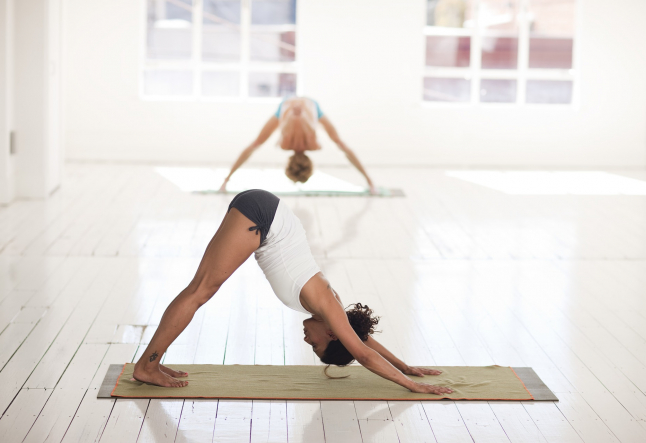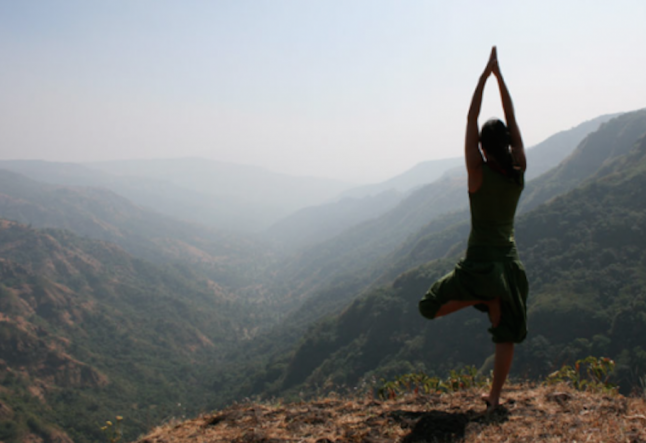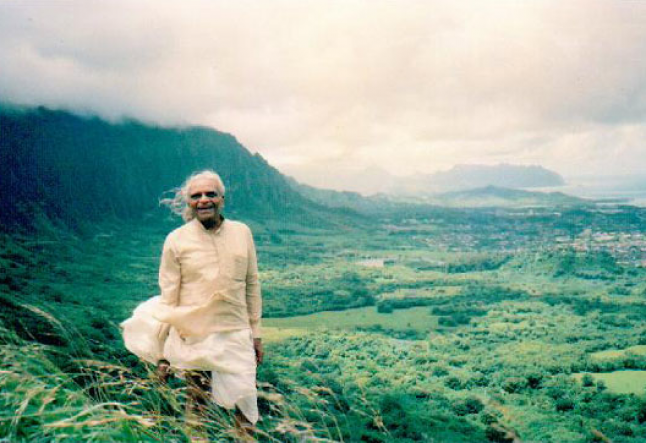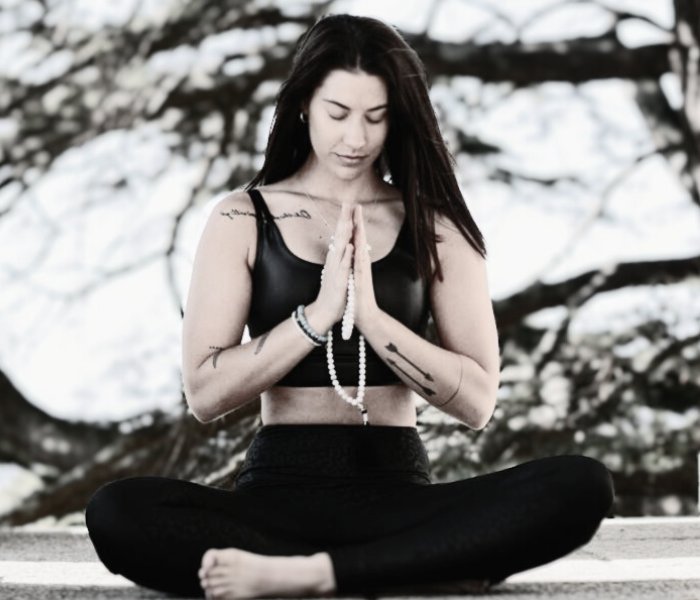strength versus flexibility: avoiding yoga-related injuries

elevate your yoga practice with greater strength
Let’s pretend I’m your substitute teacher for the day. Like any good sub, I’ll start with a pop quiz.
“What’s most important: increased flexibility or improving your balance?”
You moan: “Ugh, I don’t know.”
“You’ll need to know to ace the quiz, or you can end up in pain. Serious pain.”
Shrugging, you respond: “Flexibility?”
The answer: strength. Trick question, I know.
Yoga can be tricky if you’re in a class and the teacher isn’t able to monitor every student as closely as they would like. With a packed room of moving bodies, the teacher can’t stop the class to demonstrate proper alignment. So, if you pick up bad habits by moving from pose to pose without someone stopping you and making an adjustment, you may be in danger of getting injured at some point.
If you think strength is about holding a pose, that’s only a part of the picture.
The kind of strength you need to move through a flow class is more about stabilizing the muscles surrounding key joints than the number of push-ups or core stabilizing boat poses you can do.
Imagine that you are in a studio full of others who are doing their best to do the poses correctly. You hear the teacher say, “push to your edge.” You may strive to perfect the pose when suddenly your ego shows up and you push past your strength levels. It can be hugely problematic if we strive so hard to impress that we compromise the integrity of our practice.
Many of us arrive to class with a goal in mind – a reason to strive to improve. Only in Savasana are we instructed to just be instead of do. This is part of the reason why I am passionate about the importance of balancing strength and flexibility to avoid injury and enable you to practice yoga for a lifetime.
Let’s not forget, yoga is about balance.
It’s a body, mind and spirit practice, but in many classes I have attended, the physical aspects have surpassed the focus of yoga’s core ethos: mind and spirit development.
Even if you think you are doing the poses correctly and you have normal strength, there is the complexity of repetition to consider. Your muscles are working overtime, and if are doing the poses incorrectly, even slightly, or becoming fatigued and unable to move through them safely, this exponentially increases your risk factor of injury.
Yoga postures can be demanding of flexibility. It requires the strength of the stabilizing muscles to be done safely and to provide benefits. Even if a posture does not cause immediate injury, if performed incorrectly, it can strain structures over time, which may eventually progress into an injury. Musculoskeletal injuries related to yoga can occur as a chronic repetitive strain, an acute event, or as a combination of an acute event superimposed on the chronic strain.
For example, repetitive movements without proper strength can create major shoulder problems. The rotator cuff is particularly vulnerable in forms of yoga that involve flowing sequences that put weight on the hands. Sun salutations (Surya Namaskar) are a common sequence of postures performed in flowing forms of yoga whereby the practitioner moves from standing to downward dog (Ado Mukha Svanasana) in a repeated fashion.
Although yoga is safe, statistically the number of injuries is increasing according to a recent Orthopedic Journal of Sports Medicine study from 2001-2014. Researchers at the University of Alabama at Birmingham, who conducted the first large-scale examination of yoga-related injuries, found that the overall rate of yoga-related injuries climbed to 17 per 100,000 participants in 2014, up from 10 per 100,000 in 2001.
With the increase in both certified instructors and injuries, some believe that there is a potential lack of appropriate education for certified instructors, and that not all teacher training programs prepare teachers to prevent injury. You might be shocked to know that in a Yoga Alliance-Registered training, no specific curriculum is required to be taught, nor is there any required assessment of a registered teacher’s skill. There is currently discussion underway with Yoga Alliance, as to what new standards should be set. Use your best judgment. If a class has little instruction and you feel you need more, change the class instructor and studio if necessary.
William J. Broad’s book “The Science of Yoga: The Risks and Rewards” explores the injuries and mishaps that have happened in modern yoga classes, and how many students blame a teacher for their injury due to poor knowledge or lack of communication. As a teacher, I pride myself on alignment-based instruction and safe sequencing and most teachers are more than prepared to teach safely. However, no one is immune to yoga-related injuries. I found that out the hard way. I tore my hamstring, which sidelined me until I recovered. But I was not done learning.
What I found harder to discern, over time, was that I was incapable of engaging certain muscles correctly. For example, when a teacher in class would say “lift your kneecaps” to engage the front of the quads to stabilize the knee, I thought I was. But I had incorrectly learned how to do many simple poses, like mountain pose. My bad habit was believing that the more advanced I became, the healthier I would become. This is not always true.
In yoga classes, I was the “super flexible girl” in class, who made it all look so easy. Teachers often singled me out as an example of “where your practice could be taking you”, which I loved. Sadly, though, my ego boost should have been balanced with a caution to work on strength.
So, here’s your assignment from your sub for the day:
Ask your teacher for poses that will help you strengthen, and in turn, help support your practice overall.
Consider working with a trainer to focus on strength training. Support your practice with swimming, endurance, strength and power. Forgo fad equipment and focus on form.
With the many positive health benefits associated with yoga, the possibility of injury should not deter individuals from participating. However, caution should be used to continually evaluate where you are physically. Undertake classes at a well-known studio with qualified instructors, and more importantly, do not engage in poses that feel beyond your physical limitations. Leave your ego at the door; it’s simply not worth the risk if you plan on doing yoga forever.
For more information, check out the author Stephanie Spence’s new book: Yoga Wisdom click here.
You might like this as well: 5 basic poses to increase strength and flexibility




